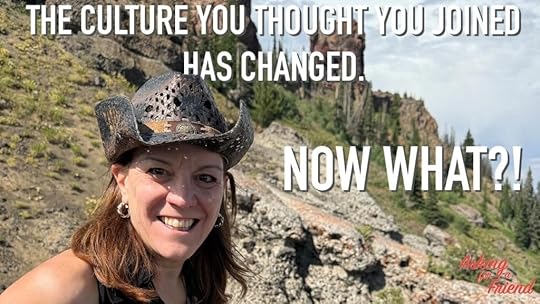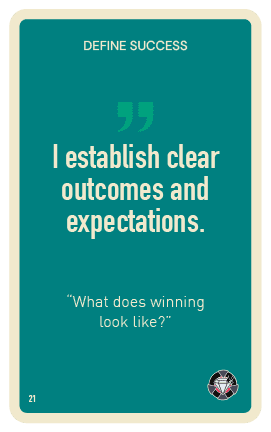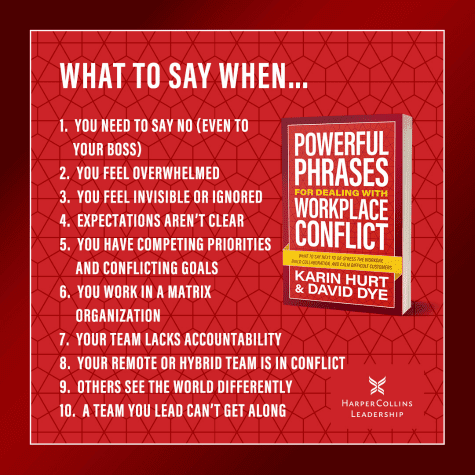David Dye's Blog, page 3
August 15, 2025
5 Leadership Mistakes That Make Your Team Ignore You (Quick Fixes Inside)
Episode 316: Could common leadership mistakes be the real reason your team isn’t performing the way you hoped?
If you’ve ever scratched your head wondering why your team isn’t delivering—despite clear expectations and solid training—this episode is for you. Learn how five often-overlooked leadership missteps could be silently derailing your team’s success, and what you can do to fix them fast.
Here’s what you’ll walk away with:
The five most common leadership mistakes that sabotage performance—and how to avoid them.Actionable tools like “5×5 communication” and “schedule the finish” that create clarity and momentum.A roadmap for follow-through that builds trust, improves morale, and keeps your team on track.Press play now to uncover which leadership mistakes are holding your team back—and what to do instead.
5 Leadership Mistakes That Quietly Derail Performance⏱ 01:00 – Mistake #1: Your Team Doesn’t Know What to Do.
Even seasoned teams need repeated clarity—use 5×5 communication and check for understanding to close the gap.
⏱ 03:28 – Mistake #2: They Don’t Know Why It Matters.
Without a compelling why, tasks feel meaningless—connect every action to purpose to fuel motivation.
⏱ 04:25 – Mistake #3: Assuming They Know How.
Don’t rely on vague traits like “ownership” or “empathy”—break them down into observable, coachable habits.
⏱ 07:18 – Mistake #4: They Can’t Perform (Even If They Want To).
Too much on their plate? Lack of resources? Learn how to schedule the finish and assess feasibility.
⏱ 10:42 – Mistake #5: Lack of Follow-Through from Leadership.
If you don’t follow up, your team learns the work doesn’t matter—balance celebration with accountability.
⏱ 01:44 – How to Use “5×5 Communication” for Better Clarity.
Say it five times, five different ways—then check for understanding to build alignment and reduce friction.
⏱ 05:23 – Teaching the How: From Concepts to Behaviors.
Model specific examples of what “good” looks like so your team knows how to meet expectations.
⏱ 08:51 – Spotting Systemic Roadblocks.
Outdated tools or overlapping systems may be silently killing productivity—learn how to ask the right questions.
⏱ 11:37 – What Accountability Conversations Sound Like.
Use the INSPIRE framework to address missed commitments without blame—just solutions.
⏱ 13:07 – Your Checklist for Performance Turnarounds.
Before jumping to conclusions, run through the 5 reasons—what, why, how, can’t, and follow-through.
The post 5 Leadership Mistakes That Make Your Team Ignore You (Quick Fixes Inside) appeared first on Let's Grow Leaders.
August 11, 2025
Your Company Culture Changed (You Didn’t) Now What? #askingforafriend
You didn’t misread the signs. Great company, mission and culture– aligned with your values. The execs seemed to dig your human-centered approach– results AND relationships. Even the website said all the right things. And in new hire orientation, you sat there thinking, “Yes. These are my people.” “This is the company culture for me.”
Or maybe you’ve been around a while, and you’ve helped shape the company culture. You’ve hired, coached, and led in alignment with it. You believed in it.
Then something shifted.
New leadership stepped in. Or a big reorg hit. Or stress started creeping in from all corners. Suddenly, people began operating differently. The words on the wall didn’t match the behaviors in the meetings.
Now you’re asking yourself a very real question: “What is going on here? And, what does this mean for me and my team?”
This “friend’s” question is particularly poignant for me for several reasons. First, I’ve heard it from several humans I care about deeply recently— all in different circumstances. And yet, their pain, frustration, and choices feel are similar and familiar. I’ve personally faced this dilemma a few times in my career at Verizon. I learned a lot about navigating these shifts with integrity during those times. I also knew when it was time to leave and start a HUMAN-CENTERED leadership development company. If you’re new here, this is a bit of the back-story.
It’s hard because you care– about the humans on your team, your mission, your customers, and all you’ve invested.
It’s hard to see a great cultural unravelling.
3 Ways to Navigate a Company Culture That’s Not What It Used to BeThis is a complex and nuanced concern– and I’m no one can give you the answer in three bullet points. AND it’s a conversation we need to have, and I have been having with leaders at all levels across a wide range of organizations. So I’ll start in the conversation with a few thoughts.. and then I’d love to hear from you– either in the comments below or on LinkedIn.

Click on the image above to watch the video.
Gather PerpectiveWhen culture shifts, it helps to pause before you panic. You need to know what you’re actually dealing with. So ask:
Did something temporary shake things up?
Are the values still here, just buried under short-term stress?
Or has something fundamentally changed?
Put it on a continuum. Where is this shift on the scale from “just a blip” to “this is not okay”?
Then ask the harder question: What is this doing to me?
Are you feeling off? Resentful? Silenced?
Are you noticing that your leadership voice is quieter—or louder in ways that don’t feel like you?

Download FREE sample Chapters of our book, Courageous Cultures
When your work starts pulling you out of alignment with your core values, that’s not just uncomfortable. That’s unsustainable.
Say Something—With Care-Filled WordsYou don’t walk into your boss’s office and say, “This culture’s trash now.” That’s not brave. That’s vague.
Instead, name what you’re seeing. Anchor it in specifics. Try something like:
“One of our values is transparency, right? Lately I’ve noticed more closed-door decisions, and people seem surprised by changes. Are you seeing that too?”
You don’t need to bring heat. Bring clarity. That opens a real conversation.
In Powerful Phrases for Dealing with Workplace Conflict, we call that starting with connection and curiosity—and there are twelve GOAT phrases to help you do just that.
And no, you don’t need to solve the whole thing in one conversation. But when you start grounded in values and ask for perspective, you shift from venting to influencing.
Stay Grounded in Your ValuesThis part? It matters most.
Culture can shift. Leaders can change. Values can get blurred in the fog of pressure. But you don’t have to go with it.
You get to choose how you lead. You get to model the culture you want, even if the broader organization has drifted.
Build your own cultural oasis. Treat your team with dignity. Stay kind and clear. Stay you.
Over the years, I’ve navigated more than a few culture earthquakes. Mergers. Restructures. The classic “this isn’t what it used to be” shift. One thing saved me every time: I kept revisiting my personal values and leadership operating norms. Every year. Without fail.
In fact, one values clash pushed me to start Let’s Grow Leaders. So… if you feel something cracking, pay attention. Sometimes, that’s the sign you’re being called to build something better.
This Might Be the Leadership Moment No One Prepares You ForYou don’t find this moment on a competency model.
No one adds “navigates quiet cultural decay with grace” to your career development plan
What you do next for yoursel and your team could be one of those career defining moments. Choose wisely.
The post Your Company Culture Changed (You Didn’t) Now What? #askingforafriend appeared first on Let's Grow Leaders.
Say These Five Words to Align Your Team Instantly
You’re halfway through a project. Teams chat is buzzing. And then it hits: no one agrees on what “done” means. Just like that– conflict. If you want to align your team without adding process for process’s sake, start using this five-word powerful phrase:
“What does winning look like?”
It’s deceptively simple. You’re creating clarity by creating a picture of success.
And clarity is what alignment needs to breathe.
The Real Problem? People Think They’re Aligned
Defining success is one of the clarity habits in our SynergyStack® Team Development system.
When a team is misaligned, it may not appear chaotic at first glance. Everyone’s doing their best. People are “on it.” Tasks are getting crossed off. But zoom out and you’ll see something else: scattered focus, unclear priorities, and that slow-burning tension that comes from never quite knowing what’s good enough.
This is how well-intended work becomes rework.
That’s why establishing clear criteria before the work begins is one of the fastest and most effective ways to align your team. It says, “We’re all going to aim at the same thing—and we’ll recognize it when we get there.”
Why Teams Skip This Step (And Why You Shouldn’t)Most teams skip defining success criteria because they think they already agree (they didn’t check for understanding). You said, “Let’s launch fast.” Someone else heard, “Let’s launch perfectly.” That disconnect doesn’t show up until you’re three weeks deep and annoyed.
Also: defining success can feel tedious. You’re already moving, the deck’s been reviewed, the kickoff call is scheduled—why slow down?
Here’s why: when you name how you’ll know something is working, you align your team instantly.
It’s five words that pull you out of assumption and into actual agreement.
Try this in real time:What does winning look like?
“Zero safety incidents.”
“The new competitor that just launched, is a blip in this market.”“We reduce rework by 20%”
You’re choosing signals. You’re agreeing on what matters most. That’s what aligns your team.
More Powerful Phrases to Align Your TeamLooking for variety? These work too:
“What would make this feel like a win?”
“What’s the most important outcome here?”
“How will we know we’re heading in the right direction?”
“If we succeed, what will be true that isn’t true today?”
You’re creating shared meaning. You’re helping people know where to point their energy. That’s how you align your team in a way that lasts.
Try This: Three Mini Personal Experiments to Define Success Here are a few mini-personal experiments to help you align your team and define success.
Here are a few mini-personal experiments to help you align your team and define success.
Before you begin anything—an email, a call, a task—ask: How will I know this was successful?
2. The “Here’s How We’ll Know” ChallengeSay the phrase in three meetings this week. Notice what changes in the conversation. (Hint: people get clearer. Fast.)
3. The Criteria RetrospectivePick a project you’re finishing. Ask yourself: Did we ever name what success looked like? If not, try defining it now. You’ll learn how to do it better next time.
If your team is working hard but not quite clicking, this is where to start.
Don’t overcomplicate it. Don’t wait for kickoff decks or new tooling. Just pause, and say:
“What does winning look like?”
The post Say These Five Words to Align Your Team Instantly appeared first on Let's Grow Leaders.
August 8, 2025
The 1 Word Leaders Overlook that Fuels Burnout
Episode 315: What’s the one word leaders overlook that’s quietly draining your team’s motivation?
If you’ve ever noticed your team going through the motions—or worse, burning out—you’re not alone. In this episode, you’ll uncover why even well-intentioned leaders unintentionally create meaningless work, and how reconnecting your team to a deeper sense of purpose can transform morale, trust, and results.
By listening, you’ll learn:
How to prevent meaningless tasks from turning into morale-killers.
The overlooked communication skill that boosts productivity and trust.
A mindset shift that helps your team stay engaged—even during tough conversations.
Tune in now to discover the overlooked word that can turn disengagement into purpose and performance.
The Word Leaders Overlook—and Why It Matters[00:00] Crash Course in Motivation & Leadership Energy.
David Dye introduces the episode’s focus: a single, powerful communication skill that revitalizes morale, prevents burnout, and strengthens team trust.
[01:49] A Tale of Two Vegetarians.
David shares a personal story comparing his own shallow motivation to be a vegetarian (to seem interesting) with his daughter’s deeper, values-driven reason—highlighting how meaningful purpose fuels sustained action.
[03:52] The Power of the “Why” Behind the Work.
The contrast between his and his daughter’s experiences underscores the importance of connecting every task to a compelling reason—a principle that’s often missing because of the word leaders overlook.
[05:48] When Work Becomes Spirit-Breaking.
Referencing Cool Hand Luke, David draws a parallel between meaningless prison labor and tasks without purpose, warning that neglecting the “why” can damage morale and productivity.
[06:33] Two Reasons Why Work Feels Pointless.
David explains that team members lose connection to their work either because they don’t understand the “why,” or because there isn’t one, both rooted in the word leaders overlook.
[08:33] A Hardware Store Lesson in Empathy.
Engineer Matt recalls a teenage job where a manager enforced a confusing rule without context—only years later did he realize the unspoken why was empathy, not obedience.
[10:37] The Missed Opportunity That Drove Disengagement.
Matt’s reflection reveals how the word leaders overlook—explaining the purpose behind actions—could have shifted his whole experience and preserved trust.
[11:29] Why Leaders Resist the “Why”.
David explores three common barriers: lack of a good reason, defensiveness, and the assumption that others “just know.” Each stems from overlooking the power of purpose.
[12:14] Trickle-Down Confusion in Communication.
When senior leaders rush or assume their direct reports understand the “why,” it creates a ripple of confusion. The word leaders overlook gets lost, and so does meaning.
[13:42] Final Warning: Don’t Weaponize the Why.
David cautions against using a compelling mission to mask systemic problems. If you care about the why, fix the root issue—not just the messaging.
The post The 1 Word Leaders Overlook that Fuels Burnout appeared first on Let's Grow Leaders.
August 1, 2025
Advice Fatigue Is Real—Let’s Talk About What Makes It Stick (With Video)
How receptive are you to advice?
I like to think of myself as a highly coachable person who is open to advice.
And lately, I’ve noticed a pattern. People offer me advice—sometimes I’m fully engaged, scribbling notes, asking follow-up questions, trying it out right away. Other times? It hits a wall. I hear it, smile politely, and my brain says, “Yeah… no.”
And I started to wonder—why the inconsistency?
So I took the conversation to LinkedIn. I asked folks what makes them actually take advice—and what makes them shut down. The responses were revealing. I even ran a quick poll, and the lowest-scoring factor surprised me: expertise.
Turns out, having all the credentials in the world doesn’t guarantee anyone’s listening.
Let’s explore what makes for better advice (advice that people want to hear).
What Makes Advice Stick?And, hey, if we’re not connected on LinkedIn, let’s do!

This was the big one. The number one reason people said they’ll take advice is because it works. Not because someone has the title or a big resume—just because following their advice has led to real results.
So if you’re giving advice, don’t lead with, “Here’s what I did.” Instead, try:
“Here’s what worked for me in a similar situation and why—think somethig of this nature might apply here?”
It’s not about being the hero of the story. It’s about giving people something they can use. In Courageous Cultures, we call that practicing the principle—taking an idea and shaping it for someone else’s reality, not yours.
2. How You Say It (Style)Style came in second. And this isn’t about being polished or flashy. It’s about tone, approach, and timing. It’s about confident humility.
You want to show up with belief in what you’ve seen work—but paired with curiosity and openness. Advice that feels like a helpful offer lands differently than advice that feels like a lecture.
Try leading with:
“Would you be open to an idea we’ve been testing out? It’s worked well for my team—I’d be happy to share the details if that’s helpful.”
This kind of invitation makes it easy for someone to opt in, rather than feel like they’re being corrected.
3. Do I Trust Your Motives? (Intention)Almost 1 in 3 people said they’ll only take advice if they believe the other person has their best interest at heart. Makes sense. Advice without trust feels like criticism. Or worse—like a power play.
This is where the context really matters. If you’re offering advice to a peer, try it one-on-one. Keep it informal. Skip the “look what I built” slide deck and try something simple like:
“Hey, we’ve been trying something that’s helped a lot—let me know if you want to hear more. Might be useful.”
When people feel like you’re sharing because you care—not because you want credit—they’re more likely to listen.
See Also: How to Lead With Their Best Interest at Heart
Make It Feel Like an Offer, Not a Push.Advice fatigue isn’t about being stubborn. It’s about people being overwhelmed with input and selective about what they trust. So if you want your ideas to land, think less about the brilliance of what you’re saying—and more about how it will help them succeed, right now, in their real context.The goal isn’t to be the expert in the room. The goal is to be useful.
real context.The goal isn’t to be the expert in the room. The goal is to be useful.
Let’s stop flooding people with advice and start giving them room to choose the help they actually want.
FAQ: Advice That SticksQ1: How can you tell the difference between someone being unreceptive to advice and just needing time to process it?
Pay attention to pacing. If someone gets quiet, pauses, or asks clarifying questions later, they may just be processing. But if their body language shuts down—folded arms, dismissive tone, topic change—they might not be open (at least not right now). Giving space can be more effective than pushing forward.Q2: What are small signals that show someone genuinely has your best interest at heart when offering feedback?
Tone matters. So does timing. People who care usually ask before offering advice, connect it to your goals, or check in afterward. They don’t try to “fix” you—they try to help you succeed on your terms.
Q3: How can you reframe advice as a collaborative idea?
Use language that invites partnership. Try:
“Here’s something we’ve tried—what do you think might work here?”
“Would it help if I shared a quick idea that’s worked before?”
That slight shift turns advice into a shared exploration, even when things are moving fast.
Are you looking for more ways to tailor your communication so it’s more likely to be heard? Download the first few chapters visit our Conflict and Collaboration Resource Center.
The post Advice Fatigue Is Real—Let’s Talk About What Makes It Stick (With Video) appeared first on Let's Grow Leaders.
How Leaders Master Managing Up: A 4-Step Communication Framework
Episode 314: What if one simple communication framework could help your boss actually listen to—and act on—your ideas?
If you’ve ever felt ignored, dismissed, or unsure how to speak up effectively, you’re not alone. This episode gives you a practical approach to managing up, so you can confidently share ideas, advocate for your team, and build credibility as a strategic thinker.
Here’s what you’ll take away when you tune in:
A four-step communication framework to make your ideas more compelling and actionable
Insight into why well-meaning messages often fall flat—and how to fix them
Real examples of how others used this framework to gain support and momentum
Listen now to start getting the traction your ideas deserve with the people who can say yes.
The Problem with Managing Up & Why It Matters[00:00] – Intro to the Episode.
David Dye introduces a powerful four-step communication framework to help leaders gain influence, represent their teams effectively, and get their ideas heard the first time.
[01:03] – Two Leaders, Same Frustration.
We meet two professionals—one advocating for desk space, the other for a cost-saving initiative—who failed to gain traction because of how they positioned their messages.
[02:44] – The Real Consequences of Not Being Heard.
David explains how poor communication when managing up can erode credibility, demoralize teams, and even cause leaders to question their effectiveness and purpose.
[03:35] – Before You Pitch: Build Your Foundation.
You must first earn credibility by doing your job well—otherwise, even the best ideas will be seen as distractions, not contributions.
[04:34] – Introducing the IDEA Communication Framework.
The four-part IDEA model (Interesting, Doable, Engaging, Actions) is revealed as the key to communicating ideas in a way that resonates with leadership.
[05:35] – I for Interesting: Think Strategic Relevance.
Start every pitch by explaining why your idea matters to your boss or their boss. Strategic relevance earns attention; complaints do not.
[07:58] – D for Doable: Show It Can Be Done.
Avoid overwhelming ideas that need high-level approval. Instead, highlight actions within your control—or show that permission is the only missing link.
[09:35] – E for Engaging: Rally Allies and Preempt Resistance.
Effective communication includes identifying stakeholders and addressing resistance before it shows up in the room. Build coalitions to boost credibility.
[12:30] – A for Actions: Ask for the Smallest Yes.
Wrap every idea with a specific next step. A simple, doable ask—like an intro or a small budget—makes it easier for leaders to say “yes.”
[17:53] – Why This Framework Builds Long-Term Credibility.
Even if your idea isn’t selected, using the communication framework positions you as a strategic thinker who understands the business—and that builds lasting influence.
The post How Leaders Master Managing Up: A 4-Step Communication Framework appeared first on Let's Grow Leaders.
July 28, 2025
How to Get Risk-Averse Teams Unstuck—One Smart Move at a Time
Some teams freeze at the edge of action.
The idea sounds promising, but someone raises a concern. Another person wants more data. A third suggests waiting for more direction. And just like that, progress gets quietly postponed.
It’s not that people are trying to block innovation. It’s that many teams have been taught—explicitly or not—that safe equals smart.
But in today’s pace of change, too much safety can cost more than the risk ever would.
Being less risk-averse doesn’t mean pushing your team to be bold for the sake of boldness. It means helping them take appropriate risks—measured, thoughtful steps forward that open the door to real progress.
Why Some Teams Default to CautionThere are usually logical reasons people become risk averse:
They’ve seen risk punished.
They’ve been part of failed projects that got personal.
They work in a culture where hesitation looks like diligence and action looks like exposure.
They confuse consensus with safety—and wait for approval that never comes.
This isn’t about fixing the team. It’s about shifting how risk is understood.
🎥 See Also (Video): How to Be Less Risk-Averse at Work
Reframing Risk as a Strategic ToolAppropriate risk isn’t about going rogue. It’s about taking action you can explain, defend, and adjust if needed.
That means:
Testing instead of betting.
Asking, “What can we try?” instead of “What if this fails?”
Making room for learning, not just performance.
When risk is framed this way, it becomes easier to say yes to motion—even in teams used to saying no.
Five Tactics to Make Risk Feel Less RiskyIf your team tends to avoid uncertainty, here’s how to help them ease into smarter decisions:
Start with language.
The phrase “Let’s try it” is low-stakes, invitational, and signals shared ownership. It doesn’t mean commit forever—it means move once.
Frame “risky” projects as a test.
Try: “Let’s test this for two weeks.” This creates psychological safety and gives the team a built-in exit ramp.
Define boundaries upfront.
Set a clear success target. Ask: What will tell us if it’s working? What’s our pivot if it’s not?
Normalize small wins and quick adjustments.
If the team only sees risk as something huge, rewire the scale. “We’re just trying a new way to kick off meetings” is a win, too.
Talk about what’s really at stake.
Ask: Is this decision permanent? Is it high impact? Is the downside recoverable? Often, the “risk” is smaller than it feels.
 Helping a risk-averse team take action starts with low-stakes, repeatable behavior. These mini-personal experiments work well inside cautious teams:
Helping a risk-averse team take action starts with low-stakes, repeatable behavior. These mini-personal experiments work well inside cautious teams:
Each week, pick one area where the team can test a new way of working—an agenda tweak, a message format, a time-saving shortcut. Make it visible and discuss it together.
▶ Risk Radar ReflectionInvite team members to reflect weekly: What’s one thing we postponed or over-analyzed this week? What made it feel risky? What could we have done instead?
▶ Team Threshold ConversationAsk the team:
“What’s one thing we would try if we weren’t worried about being wrong?”
Document it. Then pick one and try it.
Over time, these tiny movements create momentum. They also shift team identity—from one that fears risk to one that tests, learns, and adjusts.
Questions to Help the Team Rethink RiskUse these to surface hesitation and spark more strategic thinking:
What’s the cost of doing nothing?
If this idea works, what changes?

How reversible is this?
What would make this feel safer to try?
What signals would tell us it’s time to pivot?
What’s a version of this that’s smaller and easier to test?
How would we talk about this risk if it were successful?
If we’re waiting for certainty, what does “certain enough” look like?
These questions aren’t just for strategy sessions—they’re daily conversation tools to loosen the grip of caution.
Final ThoughtYou don’t need your team to become fearless.
You need them to see risk differently: as something that can be scoped, contained, tested, and learned from.
The goal isn’t bravado. It’s progress.
And that starts with one manageable move:
“Let’s try it.”
The post How to Get Risk-Averse Teams Unstuck—One Smart Move at a Time appeared first on Let's Grow Leaders.
July 25, 2025
The Missing 5-Minute Communication Skill that Will Transform Your Team’s Productivity
Episode 313: What if one overlooked communication skill could be the difference between unfinished work and unstoppable team progress?
If you’ve ever walked out of a productive meeting only to find that no one followed through, you’re not alone. This episode is your shortcut to fixing that—using just five minutes and three powerful questions that build clarity, accountability, and action into every conversation.
Listen in and walk away with:
A simple communication habit that ensures your team always knows what to do next.
A low-effort way to prevent dropped balls, delays, and confusion.
A practical technique to build your influence and get noticed—whether or not you’re leading the meeting.
Press play now to master the communication skill that transforms talk into action—starting with your very next meeting.
Why Most Meetings Fail — and How to Fix It00:00 – The promise of transformation in 5 minutes.
Host David Dye sets the stage by promising that three simple questions—asked in just five minutes—can radically improve your team’s follow-through and productivity.
00:57 – A frustrating leadership moment we’ve all faced.
David shares a story about a high-performing team that spent hours making a decision—only to have nothing happen afterward. A relatable moment that highlights the need for better communication skills.
01:52 – Decisions don’t equal action.
He explains that even highly motivated teams fail to follow through when key post-decision steps are skipped. Good intentions aren’t enough—communication skills must drive clarity.
02:48 – The three critical questions.
David introduces the game-changing framework:
These questions transform talk into accountability and progress.
04:37 – Why “How will we know?” is the secret weapon.
Most leaders skip this third question. David explains how this one—when answered clearly—ensures nothing falls through the cracks.
06:12 – A real-world example of the 3-question method.
David walks through a team example involving data collection and process rollout—demonstrating how the three questions bring structure and speed to teamwork.
07:10 – How “Brenda” avoids being left in the dark.
Using a fictional teammate, David explains how shared expectations help every team member stay informed, accountable, and efficient.
08:09 – You don’t have to be the meeting leader.
These communication skills aren’t just for managers. Even if you’re not in charge, you can ask these questions and stand out as someone who drives outcomes.
09:52 – A CEO, a senator, and a standout communicator.
David recounts a powerful moment when he clarified next steps in a high-stakes meeting—despite being the most junior person there. A bold use of communication skills that earned respect.
10:34 – Why clarity fuels confidence and momentum.
Closing thoughts emphasize that when you clarify actions, responsibilities, and timelines, your team moves faster, feels more energized, and trusts one another more deeply.
The post The Missing 5-Minute Communication Skill that Will Transform Your Team’s Productivity appeared first on Let's Grow Leaders.
July 23, 2025
Why Smart Teams Resist Your New Idea (And What to Do About It)
You’ve just come back from a strategic planning session with your boss and peers and you’ve got an amazing idea for your team to implement.
You think it’s visionary, game-changing, breakthrough stuff. You rally the team, thinking everyone’s going to high-five you into next week… and instead? Blank stares. An eye roll from your top sales performer. And your ops director just gave your PowerPoint the side eye.
Now you’re wondering… “Are they stuck in their ways, or am I missing something? How do I get them on board—or should I?”
Let’s dig in.
4 Totally Normal (But Fixable) Reasons Your Team Hates Your Great Idea (Video)

Here’s the thing—your team’s smart. They’re sniffing out the why behind your idea before you’ve even finished your pitch.
Before you go all in, hit pause and gut-check yourself:
Are you rolling out something from higher-ups you don’t even believe in?
Is this “great idea” just more work with no clear upside for your customers?
Are you chasing a shiny pet project while ignoring the big stuff your team’s already sweating over?
People can get behind bold ideas—but not if they feel like pawns in someone else’s agenda. Be honest with yourself first, and then show them how this idea actually helps them win.
2. They’re Still Swirling From Your Last Big IdeaPicture this. You get your team pumped to run through a brick wall. They charge, head down, bruised and bloody… and just when they’re figuring out how to break through, you wave your hands and say, “Never mind! We’re doing something else now!”
Oof.
Your best performers hate feeling like their hard work was wasted. If you’ve got an innovation graveyard behind you, they’re understandably skeptical. Before you launch the next big thing, check:
What’s still unfinished from your last big thing?
Who’s still grinding on your previous priorities?
How can you honor what’s working before you layer on something new?
Sometimes it’s not resistance—it’s exhaustion.
3. It’s a great idea… But “we’ve got concerns of how it will work in our context.”I’m a huge fan of best practices. But I learned the hard way: what kills it in a bustling urban office might belly-flop in a tiny branch store in rural Virginia.
Invite your team to help you slow down and do a quick reality check.
Does this really make sense for our team or our customers?
What tweaks make it more effective?
Who can help you adapt the idea so it scales smart—not sloppy?
The best ideas flex and adapt. Give people room to localize, and you’ll get way more traction.
This is an idea we call, “practice the principle,” in our book Courageous Cultures. What was the REASON you thought this idea was so great.
You might say, “Here’s what I loved about this idea, and I’m curious how this looks from your perspective? Are there faster, easier or different ways to accomplish this goal?”
4. The Idea’s Great… But the Details Are a Hot MessSome ideas sound amazing in a PowerPoint but fall apart on the frontlines. You’re seeing resistance because your team’s already mentally walking through the operational nightmares.
Here’s your easy fix: before you hit “go,” ask them:“What could make this crash and burn?”
“What’s the customer’s perspective on this?”
“What would make this easier to implement?”
“What’s one tweak that would help us crush this?”
Instead of fighting the resistance, invite it. You’ll either improve your idea or realize you dodged a bullet—and either way, you’ll earn credibility.
Sometimes, yeah, your team’s being change-resistant. But more often? They’re giving you valuable signals to help your great idea actually work.
Your moves:
Double-check your motives and connect to the bigger reason.
Don’t forget what they’re already working on (and scar tissue from last time).
Practice the Principle: Discuss alternative paths to achieve similiar goals.
Kick the tires on “how: “Pressure-test the idea before rolling it out.
See Also: The Secret to Getting Remarkable Ideas You Can Actually Use (my TEDx).
Share Your Concerns: Speak Up Wihtout Blowing Things Up
The post Why Smart Teams Resist Your New Idea (And What to Do About It) appeared first on Let's Grow Leaders.
July 21, 2025
When Good Intentions Go Extra: How to Help Your Team Stop Overcomplicating Everything
Imagine this: you ask your enthusiastic team member to get your lobby ready for a client visit. Simple, right? Twenty minutes later, they’re back with a professional interior decorator, a receipt for a velvet chaise lounge, and a tearful testimony about how the room “finally reflects its true potential.”
You’re standing there, feather duster in hand, wondering how a five-minute job turned into a Home and Garden feature spread.
You love their energy. You adore their heart. You wish you could bottle that drive and sell it on Etsy. But you don’t need a velvet chaise. You need the dust gone.
So, how do you maintain their passion and channel it into scrappy, efficient action?
1. Start with Gratitude and Clear IntentFirst things first: thank them for their energy, drive, and good intentions. Then, paint the picture of “good enough.”
Say something like:
“I love your creative spirit. For this project, we’re looking for quick impact, not a masterpiece. Think feather duster, not full-blown renovation.”
Set the expectation that scrappy isn’t “sloppy.” It’s smart. It’s strategic. It’s the leadership move of getting the right things done without turning the living room into Versailles.
2. Be Clear About What “Done” Looks LikeForget vague directions like “make it better.” Spell it out in real, specific, actionable terms.
Try:
“Here’s what success looks like: dust the surfaces, straighten the pillows, vacuum the rug. No buying furniture. No mood boards. Done is done when the space looks tidy, clean, and ready for guests.”
When you define clear finish lines, you give your team a finish line they can actually run toward—not a fog bank they’ll wander around in for three weeks.
See Also: Get Your Team Back on Track (Fast and Practical Tips)
3. Channel Their Extra into the Right Kind of ExtraTheir over-complication? It’s not a flaw—it’s a feature. You just have to point that creativity and good intentions in the right direction.
Phrase it like this:
“I’m counting on your creative touch for our next brainstorming session / event planning / customer experience refresh—places where innovation really matters. For this one, though, fast and functional is the goal.”
You’re giving them a productive outlet to sparkle without letting one project hijack the entire team’s momentum.
4. Celebrate When They Nail ItWhen they show they can execute simply and well, celebrate it like they just won a gold medal.
Say:
“Exactly what we needed—fast, focused, and fabulous! Thanks for making it easy for everyone to move forward. You nailed it.”
Reinforcing that “done right and done efficiently” is worth celebrating helps reset what “good” looks like without dulling their enthusiasm.
What If…(Frequently Asked Questions About Overzealous Good IntentionsEven when you lead with clarity and positivity, you might still bump into a few bumps along the way. Here’s how to navigate the common “what ifs”:
What if they still overdo it even after I set clear expectations?If the first conversation doesn’t stick, don’t assume they’re ignoring you—assume they think they’re exceeding your expectations. Double back with kindness and curiosity.
Say:
“I’m noticing we’re still going above and beyond what we talked about. Help me understand what’s driving that—maybe there’s something I’m missing?”
Then re-anchor:
“I love your initiative. And for this project, let’s stick closely to the simpler approach we outlined. It’s really important we keep it lightweight this time.”
Sometimes it takes a few reps before a new style of work becomes natural.
What if I want them to balance creativity and efficiency over time?Give them a framework to flex their creativity within the boundaries you set.
Idea:
Create a “creativity window.”
“Here’s the base requirement. If you have time and energy after that, feel free to pitch one extra idea or small enhancement.”
This way, they scratch their creative itch—but only after the basics are handled. It builds discipline and keeps the door open for innovation.
What if I need some fun ways to celebrate “scrappy wins”?Small, fast wins deserve small, fast celebrations!
A quick shout-out in a team meeting: “Big thanks to Sam for making that project happen so efficiently!”
A fun Slack/Teams gif: maybe a ridiculous “job well done” meme. (Extra points if it involves confetti or a breakdancing llama.)
A quick handwritten note or a Starbucks card: “Thanks for keeping it simple and smart. Your impact made a big difference.”
The key is to match the size of the celebration to the size of the win: small wins, small celebrations, big momentum.
See Also: How to Make Better, More Frequent Employee Recognition a Daily Habit
Sometimes leadership means reminding your talented team that not every task needs a standing ovation and a Pinterest board. Sometimes the best work is the work that simply gets done—well, fast, and with enough magic left over for when you need it.
And when you do need a velvet chaise? You know exactly who to call.
The post When Good Intentions Go Extra: How to Help Your Team Stop Overcomplicating Everything appeared first on Let's Grow Leaders.






